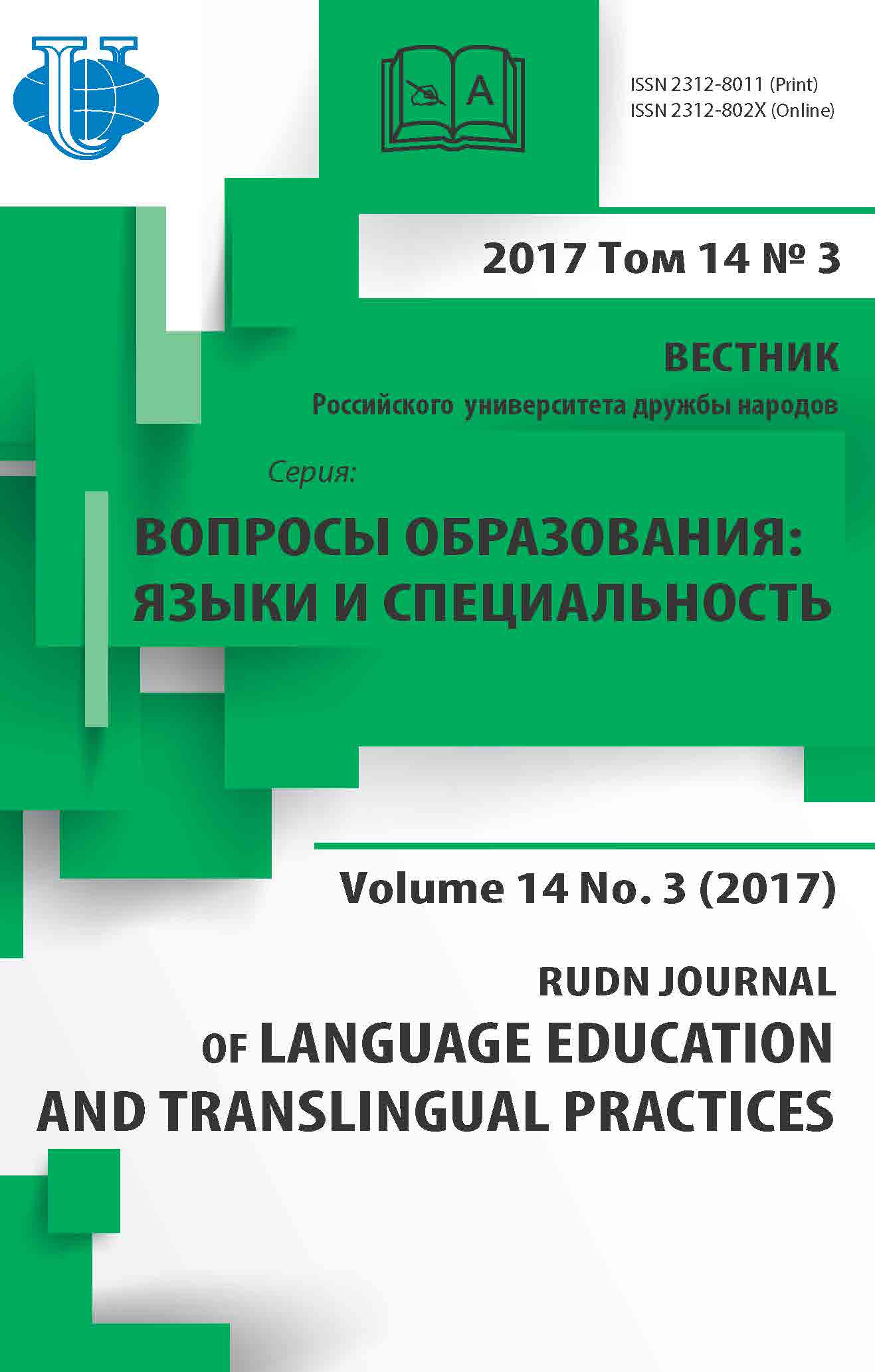ON THE DIGLOSSY OF MIDDLE-AGE GLOSSATOR: THE LINGUISTIC-CULTURAL ANALYSIS OF THE OLD HIGH GERMAN-LATIN GLOSSARIES OF VIII-X CENTURIES
- Authors: Kalinin SS1
-
Affiliations:
- Kemerovo State University
- Issue: Vol 14, No 3 (2017)
- Pages: 416-422
- Section: LANGUAGE PERSONALITY IN POLYLINGUAL ASPECT
- URL: https://journals.rudn.ru/polylinguality/article/view/17057
- DOI: https://doi.org/10.22363/2312-8011-2017-14-3-416-422
Cite item
Full Text
Abstract
The article deals with the linguistic-culture analysis of the Old High German glossaries of VIII-X c. and the bilingualism of their authors. It is known that main culture, science and religion language in Middle-Age Europe was Latin that was more “prestige” in the society. The Old High German and Middle High German later were in the subordinate status in comparison with the Latin. The bases of this research are glossary “Abrogans” of 750 year (in Aleman dialect of Old High German), St. Gallen glossary (in Aleman dialect too), Kassel glosses (in Bavaria dialect, IX c.), Paris manuscript (in Middle Frank dialect, X c.). These glossaries were aimed both at German Latin speakers and at Romanic traveler arrived in German. The linguistic-culture basic concepts of the remodeling of the Middle-Age glossator linguistic identity are given on the basis of the analysis of the glossaries and the cultural situation represented in those texts.
About the authors
S S Kalinin
Kemerovo State University
Author for correspondence.
Email: rage_of_gods@inbox.ru
Kalinin Stepan Sergeevich is a graduate student of the Department of Linguistics and Translation, Institute of Philology, Foreign Languages and Media Communications of the Kemerovo State University.
Krasnaya str., 6, Kemerovo, Russia, 650043References
- Chemodanov N.S. Hrestomatiya po istorii nemetskogo yazyika VIII—XVI vv. [History of German Language of VIII—VVI centuries: chrestomathy]. M.: Izdatelstvo literaturyi na inostrannyih yazyikah, 1953. 348 s.
- Karaulov Yu.N. Russkiy yazyik i yazyikovaya lichnost [Russian Language and Language Personality]. Izd. 8-e. M.: LIBROKOM, 2014. 264 s.
- Zhinkin N.I. Rech kak provodnik informatsii [Speech as a “conductor” of meanings]. M.: Nauka, 1982. 159 s.
- Karasik V.I. Yazyikovoy krug: lichnost, kontseptyi, diskurs [Linguistic Circle: Personality, Concepts, Discourse]. M.: Gnozis, 2004. 390 s.
- Luriya A.R. Yazyik i soznanie [Language and consciousness]. M.: Izdatelstvo Moskovskogo universiteta, 1998. 336 s.6.
- Maturana H.R. Biology of self-consciousness. Consciousness: Distinction and reflection. Naples, Italy: Bibliopolis, 1995. Pp. 145—175.
- Maturana H.R. Anticipation and self-consciousness: Are these fuction of the brain? Constructivist Foundations. 2008. № 4 (1). Pp. 18—20.
- Vaysgerber Y.L. Rodnoy yazyik i formirovanie duha [Native language and the formation of the spirit]. Per. s nem., vstup. st. i komm. O.A. Radchenko. Izd. 3-e. M.: LIBROKOM, 2009. 232 s.
- Zhirmunskiy V.M. Istoriya nemetskogo yazyika [History of the German language]. Izd. 5-e, peresm. i ispr. M.: Vyisshaya shkola, 1965. 408 s.
- Zalevskaya A.A. Voprosyi psiholingvisticheskoy teorii dvuyazyichiya [Questions on bilingualism psycholinguistic theory]. Voprosyi psiholingvistiki. 2009. № 10. S. 10—17.















